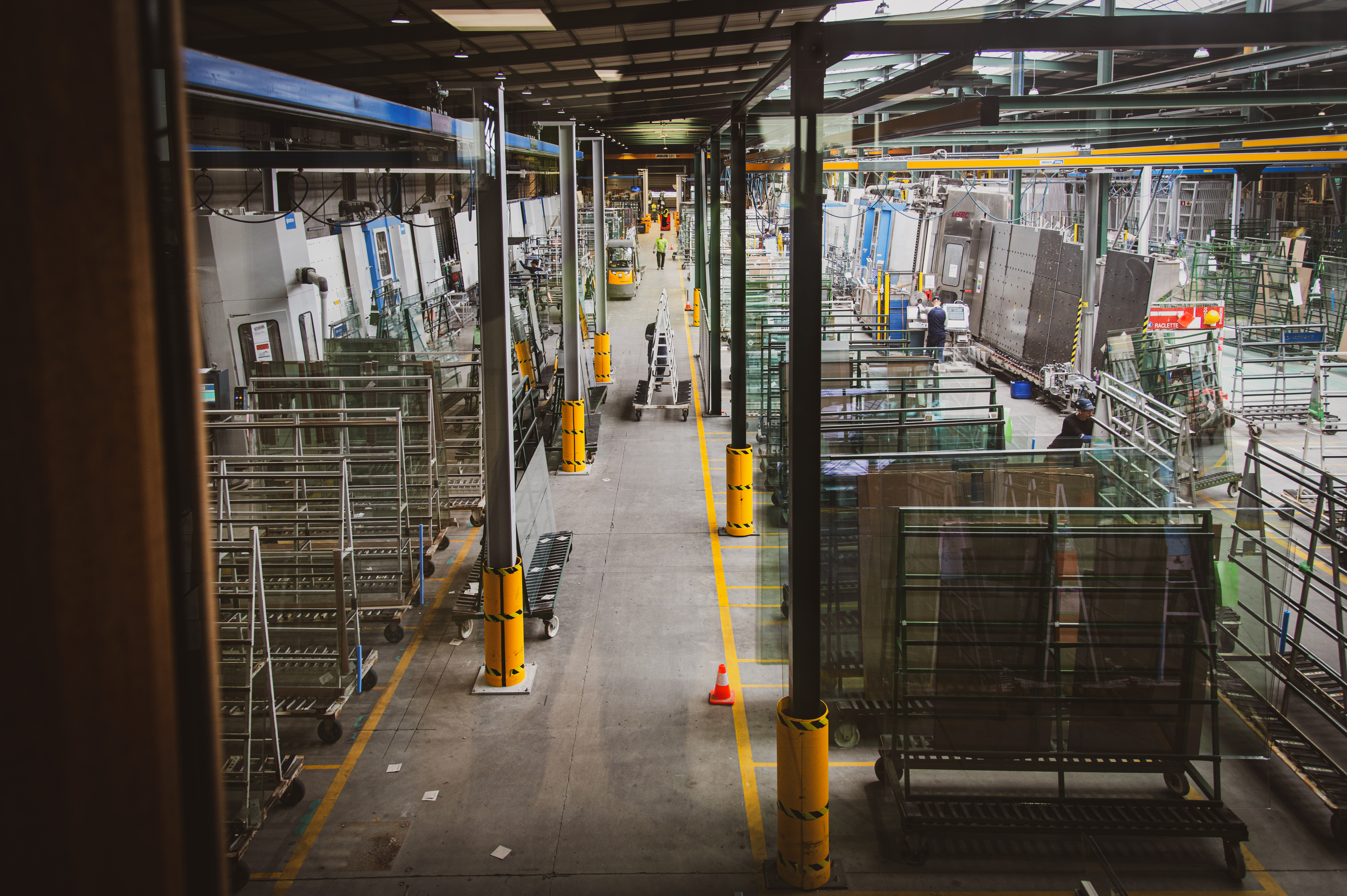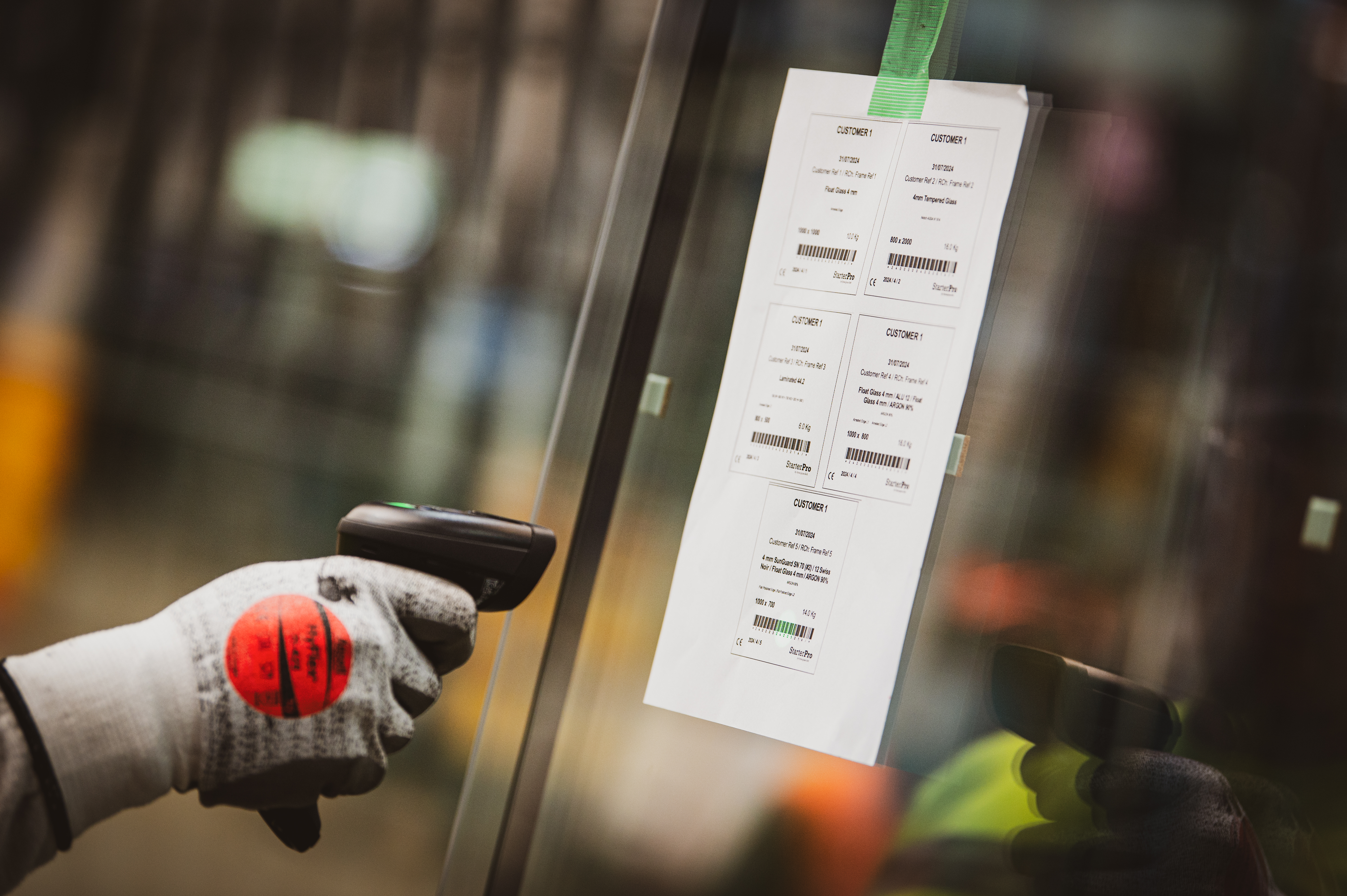Did you know that companies that switch to paperless manufacturing can boost their productivity by up to 30%? This finding from a study by AIIM (Association for Information and Image Management) shows one of the many reasons to make the shift. For glass manufacturers, going digital is not just about keeping up with the times – it is about making things more efficient, reducing errors, and staying competitive.
You might wonder: “So, what are the main benefits of going paperless?” and “How can we make sure we manage this transition effectively?”. We often work with glass manufacturers who are looking to get these benefits but need a bit of help on how to make it happen.
In this article, we will look at why moving to a paperless environment is a smart move for your business and show you how to make the transition smoothly. By the end, you should know all about the key benefits of a paperless approach and what you need to do to get it up and running. This will help you make informed decisions about transforming your operations and getting the most out of digital solutions.
What is Paperless Manufacturing?
Paperless manufacturing is all about replacing traditional paper-based processes with digital technologies. This shift involves automating things like documentation, data collection, and communication, which means there is no need for physical paperwork. For glass manufacturers, this means moving from paper order forms, production logs, and quality control checks to digital records, which integrate processes into one digital system offering real-time data access and analytics.
Pros and Cons of Paperless Manufacturing
Benefits of Going Paperless in Glass Manufacturing
Making the switch to a paperless manufacturing environment comes with several advantages that can help you work more efficiently and sustainably. But it is also important to think about the potential challenges. Below, we explore both sides to give you a complete picture of what going paperless means for glass manufacturers.
Benefit #1: Boosting Efficiency and Productivity with Paperless Systems
Paper-based processes are slow and prone to bottlenecks. In a traditional glass manufacturing environment, orders are often managed on paper, from the initial quote to the final delivery. This manual approach not only makes things slower but also makes it more likely that mistakes will be made at different stages, such as data entry mistakes or documents being filed in the wrong place.
By moving to a paperless system, you can automate many of these processes. Digital systems make it easier to manage orders, plan production, and control inventory, which means your team can work more efficiently.
For example, having access to production data in real time means you can make decisions quickly, reducing downtime and speeding up the whole production cycle. This makes your business more productive, so you can handle more orders without spending more money. It also helps your teams across different departments work better together. With digital access to shared documents and data, your sales, production, and logistics teams can work together more effectively, so everyone is on the same page.
Benefit #2: Reducing Operational Costs Through Paperless Practices
It is often the case that businesses do not realize how expensive it is to maintain paper records. The costs of paper – things like printing, storage, and management – can add up over time. Something else to think about is the cost of lost time when employees search for misplaced documents or manually input data.
Going paperless gets around all of that. Digital records mean you do not need to spend money on physical storage space, which is a great way to free up valuable resources. Plus, by using less paper, you cut down on the costs of supplies like ink, printers, and filing cabinets.
As well as saving you money, going paperless can also cut labor costs. With automated workflows, tasks that used to need manual input – like data entry and filing – are done by the system, freeing up your staff to focus on more strategic activities. Over time, these savings can make a big difference to your bottom line, making your business more competitive in a cost-conscious market.
Benefit #3: Reducing Manual Entry Time and Errors with Digital Solutions
In the glass manufacturing industry, getting things right is the name of the game. Even the smallest mistake in measuring or choosing materials can lead to a faulty product, which means extra work, wasted materials, and unhappy customers. Paper-based processes are especially prone to mistakes, especially in work environments where different teams handle the same documents.
A paperless system helps to avoid these problems by automating data entry and keeping a clear, auditable record of every transaction.
For instance, when an order is processed digitally, there is much less chance of transcription errors. What’s more, digital systems often include validation checks to make sure the data entered is accurate and consistent with other records. This means you can keep an eye on quality at every stage of the manufacturing process. In addition, if there is a problem, you can quickly find out where it started, whether it is a faulty batch of glass or an error in the production process. This level of traceability helps you deal with issues more effectively and gives customers the confidence they are looking for.
Benefit #4: Strengthening Data Security and Compliance with Paperless Operations
In an industry where unique designs and customer data are part of everyday business, data security is really important. Paper records are not very secure. Indeed, these are easily misplaced, damaged, or stolen. This can be a big problem, especially if sensitive information ends up in the wrong hands or is destroyed in a fire or flood.
Digital records can be encrypted, stored securely, and backed up in multiple locations. A paperless system lets you control who can access sensitive information and when. In addition, digital systems can track changes to documents, which is essential for complying with industry regulations.
If you are a glass manufacturer who has to stick to certain industry standards or customer requirements, a paperless system makes it easier to stay compliant. You can organize, find, and send digital records to the relevant people or bodies quickly and easily, which saves time and effort.
Benefit #5: Preparing for Electronic Invoicing and Regulatory Changes
One of the main reasons businesses are looking to switch to paperless systems is that they have to start sending invoices electronically. Many countries are introducing or strengthening rules that require businesses to issue and receive invoices electronically. This change is being driven by the need to increase transparency, reduce fraud, and make tax reporting more efficient.
For glass manufacturers, going electronic with their invoicing is not just about efficiency – it is also a legal requirement. Electronic invoicing systems make it easy to create, send, and store invoices in a way that meets all the legal requirements and can be quickly found when needed for audits or tax purposes. It also helps you get paid faster and manage your cash flow better because you can process and approve invoices more quickly in digital format.
Benefit #6: Environmental Impact
Going paperless is a great way to help the environment. By cutting out the need for paper, you can make a big impact on deforestation, which helps to protect important ecosystems and biodiversity. On top of that, using less paper means less waste in landfills, which helps reduce the environmental impact of paper decomposition and associated methane emissions. Cutting down on water and energy use in the paper production process also means fewer pollutants and greenhouse gases are released into the atmosphere.
This shift not only helps you meet broader sustainability goals but also makes your company more environmentally responsible by reducing your carbon footprint. Using less paper helps create a cleaner, greener workplace and shows you are committed to corporate social responsibility. This commitment is important to customers and stakeholders who care about the environment, which makes your brand look good.
Potential Drawbacks of Going Paperless
Challenge #1: High Initial Investment
The upfront costs of switching to a paperless system can be pretty high. Businesses might have to spend money on buying new software, upgrading their IT systems and training staff on new technologies.
For instance, investing in a solid ERP system that makes paperless processes easier can cost anywhere from a few thousand to tens of thousands of euros, depending on how complex and big the business is. For some companies, especially smaller manufacturers, this upfront investment can be a barrier to making the shift, leading them to delay or even reconsider the transition.
Challenge #2: Potential Resistance to Change
There might be some resistance to change when moving towards a paperless environment. Some workers are used to doing things the old-fashioned way, so they might be reluctant to get on board with new technologies. This can cause confusion and inefficiencies as staff get used to the new system.
For example, employees might be worried about their job security, thinking that automation could mean job losses. It is often the case that organisations have to invest time and resources into change management strategies and comprehensive training programmes to help employees understand the benefits of going paperless, as well as providing reassurance about job roles.
Challenge #3: Dependence on Technology
A paperless system relies a lot on technology, which makes manufacturers vulnerable to problems caused by technical failures. If the system goes down, or there is software bugs or hardware failure, it can stop production and cost a lot of money.
For example, if a cloud-based document management system goes down, employees might not be able to access important production data, which could cause delays in order fulfilment. It is important for organisations to make sure they have solid IT support, backup systems and emergency plans in place to deal with potential risks associated with relying too much on technology. This includes making sure they regularly update their systems and carry out maintenance checks.
Challenge #4: Data Security Risks
While digital systems can help keep data secure, they also create new risks. As more and more businesses move towards paperless operations, cybersecurity threats are becoming an increasingly important concern. If data is breached, it could lead to sensitive information being exposed, including customer details, financial records and proprietary designs.
For instance, a cyber attack can prevent companies from accessing their own data, which could result in financial losses and damage to their reputation. It’s crucial for companies to have strong cybersecurity measures in place, like encryption, firewalls, and regular security audits, to keep sensitive information safe from breaches and unauthorised access. This often means making ongoing investments in security tools and training employees to make them more aware of cybersecurity.
Challenge #5: Challenges in Integrating with Existing Systems
Integrating new paperless solutions with existing tech can be tricky and time-consuming. Many organisations rely on outdated systems that do not always work well with new digital tools.
For instance, if a glass manufacturer uses an old-fashioned inventory management system, it might not work with modern software solutions designed for paperless operations. This can cause problems and slow things down as companies try to get everything working together, which might need extra resources and expertise to sort out. There might also be unexpected costs involved in moving data and training staff on the new systems.
Challenge #6: Loss of Personal Touch in Customer Interactions
The downside of going paperless is that it can make it harder to have those personal interactions with customers that are so important in many industries. As businesses move towards digital communications, they may accidentally lose the personal touch that comes with face-to-face meetings and physical documents.
For example, relying only on automated emails for customer correspondence might mean that customers feel less connected, which could affect satisfaction. Companies need to find ways to keep up meaningful connections with clients, such as incorporating virtual meetings, personalised follow-ups, and maintaining some traditional communication channels, to make sure that the transition to digital doesn’t affect the quality of customer relationships.
How to Successfully Transition to a Paperless Manufacturing System
It is obvious that going paperless has its advantages, but it is not as simple as just switching over. You need to plan and execute the transition carefully. Here is how you can make the switch without any bumps in the road:
Step #1: Conduct a Comprehensive Process Audit
Start by mapping out your current workflows to see where paper is being used and where there is room for improvement. This audit will help you figure out which processes to digitize first and see how it could affect your operations.
Step #2: Select the Right Technology Solutions
Not all digital solutions are the same. If you are in the glass manufacturing business, it is important to choose software that can handle the specific demands of your industry. Things like custom order processing, scrap rate management, and integration with existing systems and production machines are all important.
Step #3: Implement a Phased Rollout
You do not have to go from paper to paperless overnight. Start with the areas that will give you the biggest immediate boost – like order processing and production management – and then gradually expand to other parts of your business. This phased approach means there will be less disruption and your team will have time to get used to the new system.
Step #4: Invest in Training and Support
Even the best technology will not deliver results if your team is not on board. Make sure everyone gets comprehensive training on how to use the new digital tools effectively. It is also important to have ongoing support in place so that your team has the resources they need to overcome any challenges that come up during the transition.
Step #5: Monitor, Review, and Optimize
Once you have got your paperless system up and running, it is important to keep an eye on it to make sure it is doing what you want it to. Get feedback from your team, check how it is performing, and be ready to make changes if you need to. Optimizing it is something you will need to do all the time, and being proactive will help you get the most out of your digital investment.
Should You Transition to a Paperless Industry?
In this article, we showed you the main reasons why switching to a paperless manufacturing system is a good idea. We hope this overview helps you see why going paperless is more than just a trend – it is a strategic move that can improve how your business operates.
To figure out if your business is ready for this change, you need to do a full process review and think about how it will affect your workflows and profits. This analysis should give you the clarity and confidence you need to make an informed decision that’s right for your business.
Implementing the right ERP system can significantly facilitate your transition to a paperless environment. To go paperless with Synerglass-Soft, contact us at sales@synerglass-soft.com. In the meantime, we invite you to read our other article on the top reasons to upgrade your glass processing system here for additional insights into optimizing your operations.
Let us help you stay ahead of the curve and ensure your business remains efficient, competitive, and sustainable.




